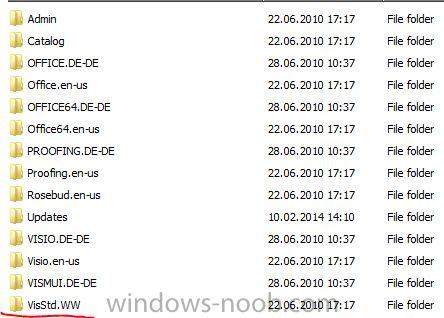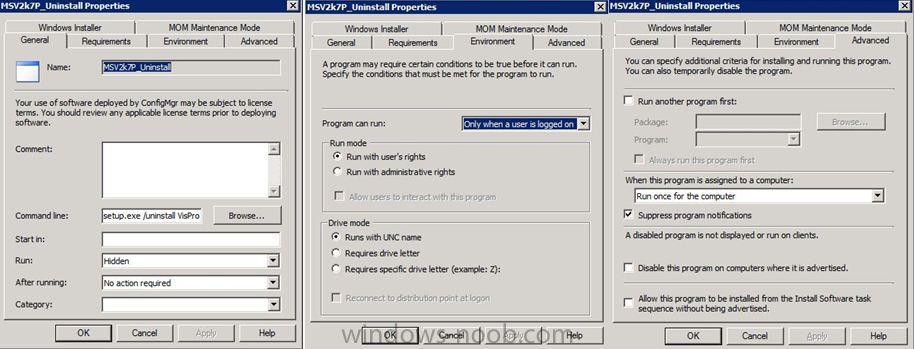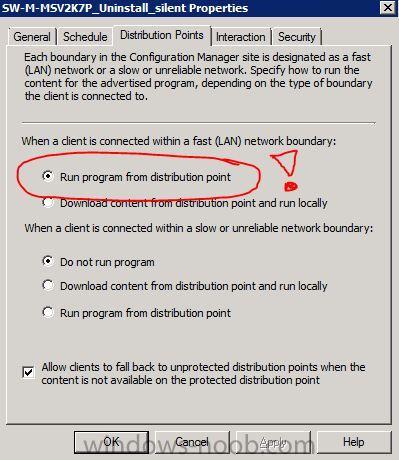Search the Community
Showing results for tags 'Office'.
-
I deployed the latest March Update for Office 365 to one Test Machine and it was marked as compliant even though it hasn't installed the update and is still on the old Office 365. I have checked the logs, nothing there. I went through the logs mentioned here https://technet.microsoft.com/en-gb/...
-
hello, I have installed office access 2016 and access runtime 2013. unfortunately I need exactly these versions. I have a program that uses access runtime 2013. if I install after the program access 2016, he wants to configure again and again. a normal user does not have the right. How can...
-
hello, I have installed office access 2016 and access runtime 2013. unfortunately I need exactly these versions. I have a program that uses access runtime 2013. if I install after the program access 2016, he wants to configure again and again. a normal user does not have the right. How can...
-
Hi, all. I noticed today that the disk space on our Config Manager server was getting a bit more filled up than I'd like. Dumping the .wim.bak files left over from offline servicing helped, but when I fired up Treesize, it pointed out that our Office 2013 updates are taking up a TON of space. Rig...
- 4 replies
-
- office
- office 2013
-
(and 3 more)
Tagged with:
-
I work at a community college and we have sccm clients running Office versions from 2003-2013. I have scoured the web trying to find a query that could accomplish this task, but with my lack of SQL knowledge and specificity of the statement, I couldn't find a solution. Any thoughts?
-
Hi everyone, I have packaged Office 2013 Enterprise software and I keep getting error code 0x756B (30059) Now I know this code is related to licence keys so I copied the software to a space laptop. Created an MSP file and dumped it in the updates folder. Then I run the setup.exe locally...
- 1 reply
-
- office 2013
- sccm 2012
- (and 4 more)
-
Hi, the process for uninstallation for ALL Office, Visio and Project versions (2007 and 2010) would go like this: create a new .xml file named: "SilentUninstallConfig.xml" and save it in your installation folder or where you want. Populate the file with: <Configuration Product="APPL...
-
- Office
- Uninstall Office
- (and 8 more)
-
Hi there, Just getting into SCCM 2012 and I have a question about what might be the best way to setup my boundaries. I would like to use our AD sites as it seems to be the least administrative heavy option, however because of our configuration I'm not sure it is possible. The way our AD site...
- 2 replies
-
- boundaries
- ad
- (and 4 more)
-
Hello, I have an Office 2010 32 bits package, I deploy this package on 32 and 64 bits OS with SCCM 2012. I want to convert this package into an application and I would like to know if I should check the "run installation program as 32-bit process on 64-bit clients" box in the installation progr...
-
- application
- office
-
(and 2 more)
Tagged with:
-
Office Installation Failure through MDT
mendoza.michael posted a question in Microsoft Deployment Toolkit (MDT)
Hello, First I'd like to say thanks for this site. It has been incredibly helpful and has been a blessing. I'm running MDT 2010 update 1 and I'm having an intermittent but relatively consistent issue when trying to deploy Office 2010 and 2007. I have a base Windows 7 image deployed and an... -
If you haven’t seen it already, the whole Wave 15 has reached RTM state, which means that the code is ready. This means that Office 2013, Lync 2013, Exchange 2013 and Sharepoint 2013 is now code completed. The software will be available for download in mid November. More information can be...
-
Here is my issue. Our image was built with a MAK key for Office 2010. Since I didn't build the images, I payed no attention to this. Well after imaging over 1000 machines, we've figured out that we need to use a KMS host for Office activation as our MAK keys are running over. I've already i...
- 1 reply
-
- office
- activation
-
(and 3 more)
Tagged with:
-
I'm having an issue imaging one of my desktops. This is a standard Windows 7 64 bit image and I genearally use it a couple times a week with no issue. I have one computer, however, where it just hangs indefinately on the installation of Office. This is the last advertisement shown for my Windows...
-
Hello! I'm currently attempting to deploy Windows 7 and Office 2010 in the same task sequence. In my current TS, Windows 7 installs correctly, but Office 2010 does not. The error I get in smsts.log is that the step (Install Software) must be running in full OS. However, I tell the PC to reboot b...








